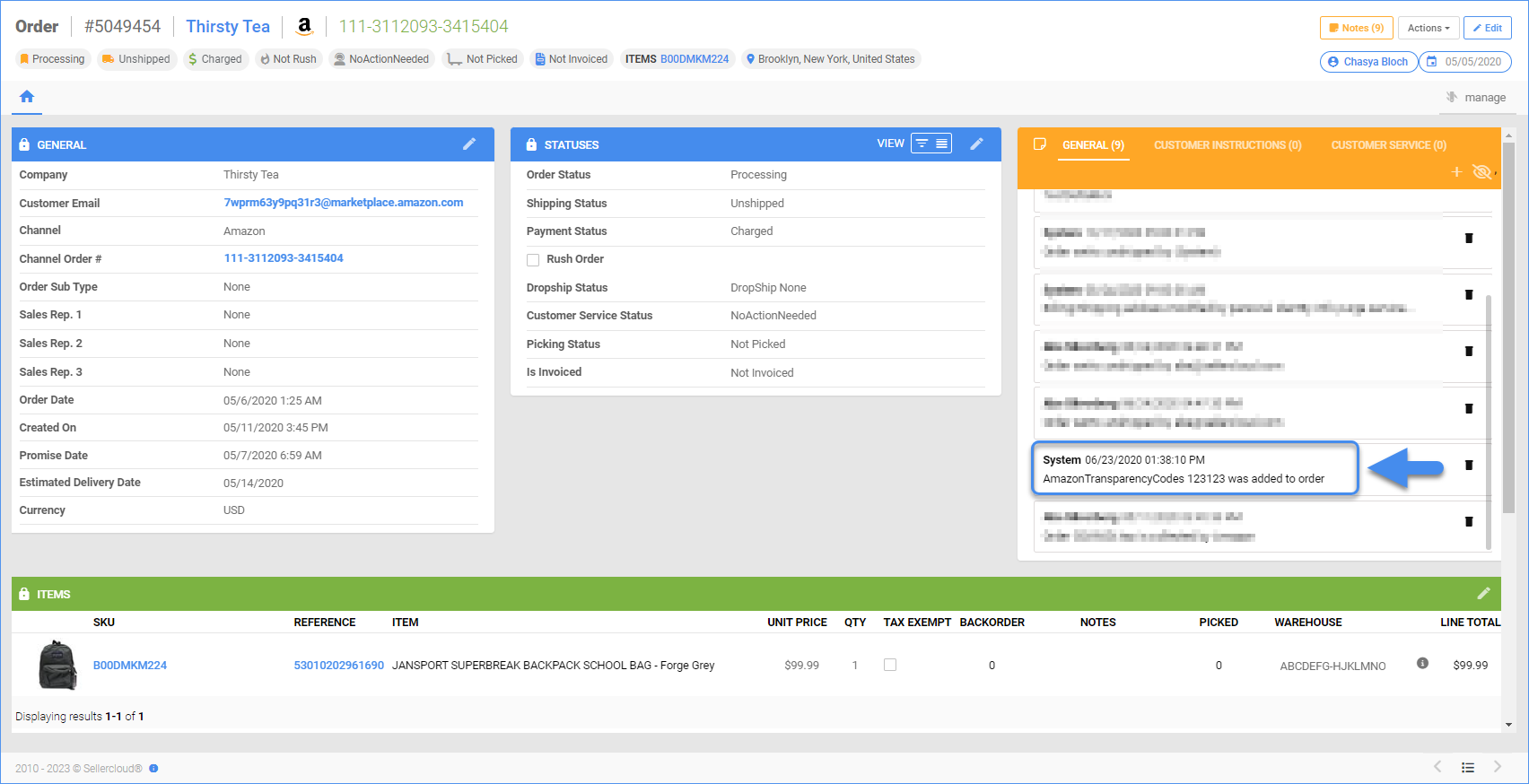Overview
Amazon Transparency is a product serialization service that helps identify individual products in order to prevent counterfeit items from reaching your customers. This is a global Amazon service, so once your products are enrolled, they will be protected regardless of the marketplace. However, currently, there are country-based restrictions regarding using your own codes. You can find more information here.
The Transparency service offers:
- Proactive counterfeit protection— Amazon has implemented Transparency checks to proactively prevent counterfeits of Transparency-enabled products from reaching customers.
- Authenticity verification by customers— Transparency allows any customer to authenticate any Transparency-enabled product, regardless of where they purchase it (Amazon, other e-commerce sites, brick-and-mortar stores, etc.).
- Customer transparency— In addition to enabling customers to authenticate products, brands can use Transparency to communicate unit-level product information, including manufacturing date, manufacturing place, and enhanced product information (e.g., ingredients).
Prerequisites
In order to incorporate the Amazon Transparency Codes into your Sellercloud workflow, there are a few prerequisites you need to complete first:
- Enroll your products in Transparency.
- Go to Seller Central to prepare your account:
- Mark the necessary listed products as transparency-enabled so that Sellercloud can retrieve this information from Amazon’s reports.
- Enable the necessary column in the Amazon Order Report settings:
After you have prepared your Amazon account, you can head over to Sellercloud and enable the workflow:
- Navigate to Settings > open the Amazon-integrated Company.
- Go to Amazon General Settings > click Enable Amazon Transparency > Save.
Amazon Transparency Codes
The above prerequisites allow Sellercloud to receive and process information related to Amazon Transparency Codes. When an order is placed on Amazon for a product that is transparency-enabled, that information comes through with the Flat File Order Report, which is responsible for the creation of your Amazon Orders in Sellercloud.
If an order contains an item that requires a Transparency Code, it will be flagged as such, and you will need to scan the code before being able to ship. After you have scanned the code, you can generate a shipping label via Shipbridge. If you are purchasing postage from Amazon, the transparency code will be included in the label request.
Ship Transparency-Enabled Products
If you use Shipbridge to fulfill your orders, you’ll be prompted to scan the transparency code label; otherwise, you will be prevented from shipping. Here’s how to do this in Scan and Ship:
- Have the transparency codes from Amazon ready.
- Scan/enter each transparency code in the Transparency Code dialog box, and update the item.
- Print the transparency code label and apply it to the product.
- Scan the product’s label.
- Resume shipping as usual.
If you are not using Shipbridge, refer to the Import Transparency Codes section below.
FBA Transparency Codes
Proper FBA preparation helps ensure that your Amazon-fulfilled products meet all necessary requirements and are ready to be shipped to their fulfillment centers. If your products are enrolled in Amazon’s Transparency program, this preparation may involve applying transparency stickers. To ensure proper application, follow these steps to configure your settings:
- Navigate to the Product Details page of your SKU.
- Open the Toolbox > Shipping Preferences.
- Check the box for Require Transparency Sticker and save.
When enabled, an icon indicator will be displayed for each item in the FBA Inbound Shipment that requires a transparency sticker.
Import Transparency Codes
If you do not use Shipbridge to ship your orders, you can upload transparency codes into Sellercloud:
- Go to Orders > Tools.
- Click Import Order Info via File > Import Amazon Transparency Codes.
- Download and fill in the template. Make sure to include values for all the required columns.
- Optionally, you can fill in the Channel Order ID column and use that to match the transparency codes being imported.
- Save the filled-in template and click to upload it into Sellercloud.
- Click Import.
The Transparency Codes will automatically be added to the Order Notes in Sellercloud and will be sent to Amazon along with the order tracking information. 
